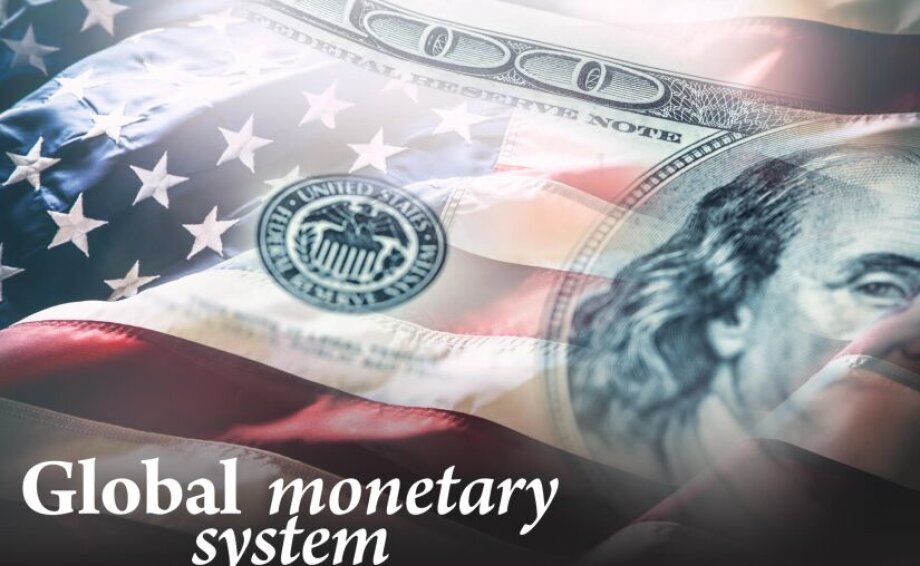The Bretton Woods Conference in 1944 is considered the birthplace of the current international monetary system of the global economy. It is a system that established the rules governing the commercial and financial relations between the industrial countries, namely the US, Canada, Western European countries, Australia and Japan. The agreement also established the International Monetary Fund (IMF) and the International Bank for Reconstruction and Development (IBRD), today part of the World Bank. More importantly, the same agreement coined the US dollar hegemony as a global currency thanks to owning two-thirds of the world’s gold reserve when the agreement was signed. However, that means the US has to inject enough currency units through a trade deficit to ensure elasticity for the global economy’s growth. According to Bretton Woods, every dollar was gold-backed until 1971 when the US decided unilaterally to terminate convertibility to gold.
CHANGES GALORE
Changes in the global geopolitical landscape and the shift in its industrial and supply chain landmarks allowed the rise of new nations that weren’t necessarily part of key players in the 1944 conference, namely China, India, and Brazil, which imposed the need for a change. It is also essential to understand that the decision-makers in the US realized the price paid for the dollar’s hegemony translated into public debt reaching 130 percent of GDP, a high unemployment rate, and the risk of a dependent supply chain of strategic manufacturing sectors. It is also essential to understand that fiat currencies are losing ground to technology — cryptocurrencies, to be specific — due to their instability and the mistrust of the general public in the monetary system.
To understand the global monetary system and where we are going, we need to study history and understand the story behind the Fed and how it evolved as a critical institution for both the US and global economy. The current Fed isn’t the first but the third in US history. Modeled after the Bank of England, the Fed was established in the early 1790s by Alexander Hamilton, then-President George Washington’s secretary of the treasury, to deal with the war debt and put the government on sound financial footing. It was intended to help fund the government’s debt and issue currency notes. So, while in some ways the First Bank prefigured the current Fed, it also differed from it significantly by offering commercial loans directly into the real economy as an alternative to British banks at the time of the revolution. The Second Bank of the United States was founded in 1816. It lasted till 1836 when then-President Andrew Jackson abolished it as he hated the rationale behind central banks. He hadn’t forgotten the lessons from the early years of the bank’s existence that such a powerful private institution was susceptible to corruption and would be difficult to control.
BANKING NOW
The shift to the current form of the Fed started to shape up during the 1930s when people like Milton Friedman blamed the Great Depression for the Fed contracting base money or bank reserve, which caused many commercial banks to go bust. At the time, most economists didn’t realize how dependent the economy had become on the commercial banking system. Economists pointed at the real bills doctrine as the reason behind policy errors committed by the Fed, which influenced and shaped modern monetary and central banks’ policies of today’s world.
It is the scenario where businesses need a short-term loan to purchase widgets that they use in producing products to sell. And once they have sold that product into the real economy, they could pay back the loan. The short-term increase in money supply facilitates productivity without impacting the consumer’s price inflation. However, the global financial crisis (GFC) of 2007-2008 proved how far the monetary system went in the wrong direction in funding speculative, malinvestments and away from its primary mandate in controlling monetary expansion and maintaining price stability.
It has become a certainty that the Fed lost control over the monetary system to commercial banks during the 1920s. No one understood how much the economy was tied to the commercial banking system, causing the Great Depression of the 1930s — in other words, losing control over the dollar.
LOSING OUT
Although the dollar became a global reserve currency in Bretton Woods in 1944, granting the US a powerful tool to control the global economy and politics, the Fed lost control of the international supply of dollars in the Eurodollar system. Triffin Paradox explains the dilemma as the global economy growth at full capacity depended on running a trade deficit by importing goods and exporting dollars to ensure dollar elasticity. In the 1960s, economists started to understand that this banking system sprung out of the shadow of the Eurodollar system. Hence, the Fed doesn’t just have to bail out US banks as they have done during the GFC, but they have to bail out the global banking system through an even more significant trade deficit and hollow out the manufacturing base even further.
In 2020, we saw the IMF talking about a new Bretton Woods and reinventing the global monetary system deemed too dependent on the US dollar as a global reserve currency. I believe the decision has to do with the rise of populist politics in the US and the election of Donald Trump as president in 2016, who made reducing the trade deficit and bringing the manufacturing base home a top priority. It is also about China’s desire to reduce dependency on dollars and implementing its currency, the digital renminbi, in key commodities markets like Africa. However, decision-makers in the US are well aware of the dollar’s cost-benefit as a reserve currency. Understanding the history behind the Fed, I believe the US will defend its turf by creating digital dollars and reviving the first version of the Fed as a commercial bank that lends directly to the economy, targeting resources according to mandate and based on social and political narratives.
NO PERFECT SCENARIO
I think there will be no perfect scenario, only a tradeoff, especially when the global economy is addicted to debt and a low-interest-rate environment. Hence, the Fed and other central banks have to deal with different scenarios that will guarantee market liquidity to shore the global economy from its dependency on the commercial banking system while normalizing the monetary base as inflation increases without bankrupting governments and the private sector. One of the unconventional solutions is what American economist Paul Krugman called the one trillion-dollar platinum coin and what macro-analyst Luke Gromen discussed in a recent interview about the price of gold.
The theory takes on the US being in a fiscally irrecoverable position. It highlights the need to increase the rate while recognizing the challenge of a high debt ratio to GDP. Therefore, it prioritizes getting the ratio down to a level where it is possible to increase rates significantly without breaking the system. The mechanism relies on a point in the Fed operation manual that says that if the treasury tells the Fed to revalue gold higher, the revaluation amount gets put into the Treasury General Account (TGA). Hence, allowing the US government to stimulate nominal GDP growth and reduce the debt to GDP ratio. Thus, opening doors for the Fed to normalize rates accordingly.
Now there are many questions we need to answer. Do we need a central bank digital currency (CBDC)? Or is it about the fear of missing out compared to the Chinese CBDC? Is the speculation and disconnect between the financial and the real economy the actual problem? Could we then see the central banks instead rethink their model and go back to a sound monetary system similar to what Fed board member Adolph C Miller put forward in 1929?
Only time will tell (but with uncertainties).
 Ben Esmael is a Poland-based strategic advisor, investor and writer, and co-founder of Corporate Break – “a non-profit think-tank and experience-sharing platform focusing on helping individuals learn, professionally grow and make well-informed decisions.
Ben Esmael is a Poland-based strategic advisor, investor and writer, and co-founder of Corporate Break – “a non-profit think-tank and experience-sharing platform focusing on helping individuals learn, professionally grow and make well-informed decisions.












 Ben Esmael is a Poland-based strategic advisor, investor and writer, and co-founder of Corporate Break – “a non-profit think-tank and experience-sharing platform focusing on helping individuals learn, professionally grow and make well-informed decisions.
Ben Esmael is a Poland-based strategic advisor, investor and writer, and co-founder of Corporate Break – “a non-profit think-tank and experience-sharing platform focusing on helping individuals learn, professionally grow and make well-informed decisions.




